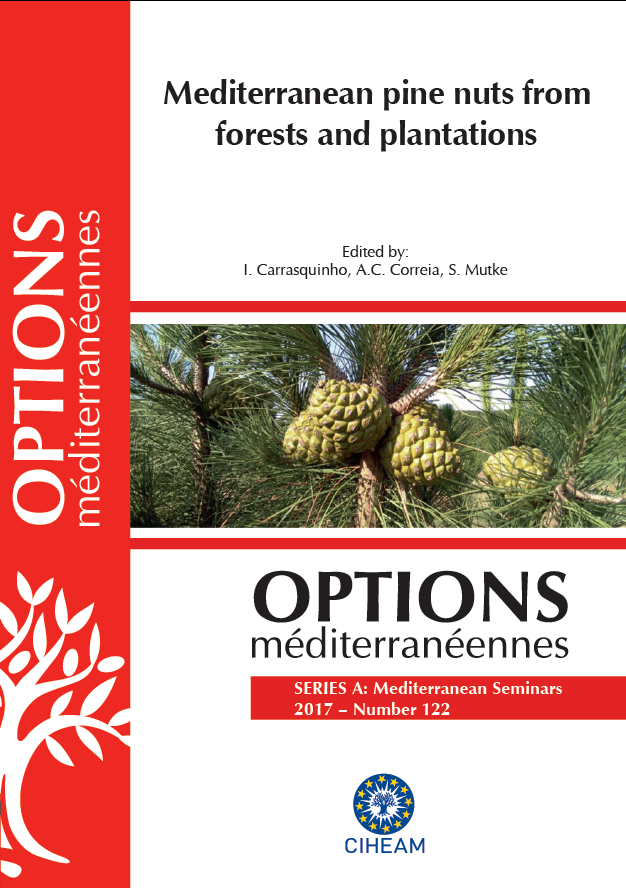| Article précédent | p. 63-68 | Article suivant |
Reproductive phenology of Pinus pinea
Stone pine (Pinus pinea) is one important species for pine nut production worldwide, assuming an extreme economic, cultural and environmental importance in the Mediterranean Basin due to pine nut production. In Portugal, 70% of the national production comes from Alentejo region, where edafoclimatic conditions are propitious to high productivity and quality, rendering high economy revenue. Stone pine has a peculiar reproductive cycle, with approximately 3 years from bud differentiation to maturation. Recent reports point to a decrease in cone production and pine nut productivity, which could be associated with damages in specific phases of stone pine reproductive phenology. During two consecutive years, reproductive phenology was monitored in three plots, one located in Alcácer do Sal and two in Coruche. Observations and images were acquired over two growing periods, from beginning of March 2012 to end of August 2013. The periodicity of the observations ranged between one and three weeks depending on the time of the year. Male phenology was described in 3 main phases and female phenology was described in 7. The knowledge of reproductive phenology is important for relating production and productivity with climatic data or even in a major scale with climatic changes. Through plant phenological stages it is possible to assess damage that may be caused by insects that compromise the pine nut production.
- [ Afficher ]
- [ Télécharger ]
- [ Exporter la citation ]
Vous pouvez télécharger la citation au format :
- [ Imprimer ]
-
Mots-clés
PINUS PINEACiter cet article
Valdiviesso T., Pimpao M., Trindade C.S., Varela M.C. Reproductive phenology of Pinus pinea. In : Carrasquinho I. (ed.), Correia A.C. (ed.), Mutke S. (ed.). Mediterranean pine nuts from forests and plantations. Zaragoza : CIHEAM, 2017. p. 63-68. (Options Méditerranéennes : Série A. Séminaires Méditerranéens; n. 122). 2. International Meeting on Mediterranean Stone Pine for Agroforestry : AgroPine2016, 2016/05/18-20, Oeiras (Portugal). http://om.ciheam.org/om/pdf/a122/00007243.pdf



